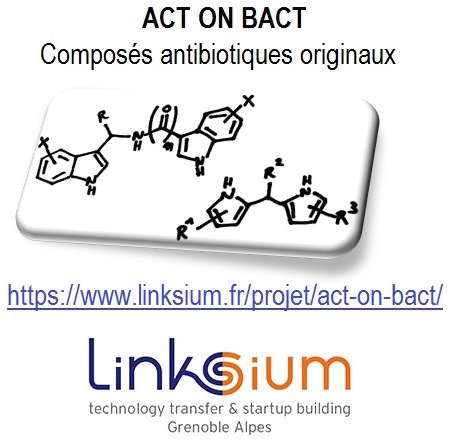- Imprimer
- Partager
- Partager sur Facebook
- Partager sur X
- Partager sur LinkedIn
Developing synthetic methods in heterocyclic chemistry and applying them to the synthesis of natural and/or biologically relevant products is our main research objective. Among these studies, a fruitful collaboration with a bacteriology team (Prof. Max Maurin, CHUGA) led to the identification of two novel families of antibacterial compounds, namely bis-indoles and dipyrromethanes (4 patents). These molecules display strong in vitro activities against Gram-positive bacteria, especially against multi-drug resistant strains (MRSA, VISA, GRE). This translational research was recently included in a maturation stage at SATT Linksium.


Pelloux-Leon, N., Minassian F., Maurin M., & Denis J-N. (2013). Pyrrolic Derivatives, Processes For Preparing The Same and Their Uses as a Drug 260 pp.
Godet-Bar, T., J.-C.. Lepretre, P. Poizot, F. Massuyeau, E. Faulques, A. Christen, F. Minassian, J-F. Poisson, F. Loiseau, and F. Lafolet, "Light assisted rechargeable batteries: a proof of concept with BODIPY derivatives acting as a combined photosensitizer and electrical storage unit.", J. Mater. Chem. A Mater. Energy Sustain., vol. 5, no. 5: Royal Society of Chemistry, pp. 1902–1905, 2017.
- Imprimer
- Partager
- Partager sur Facebook
- Partager sur X
- Partager sur LinkedIn